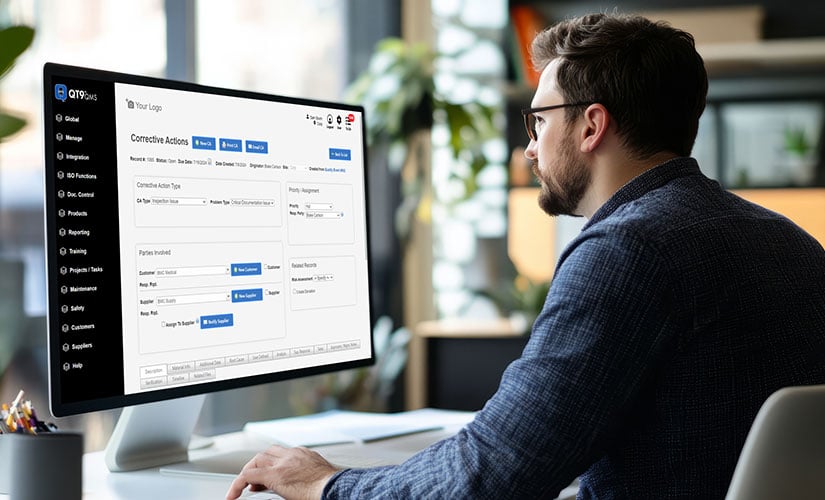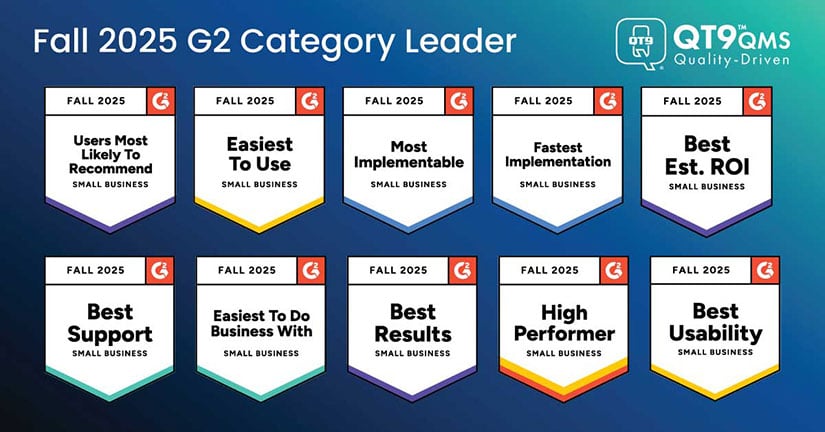Nonconforming Product Management Software
Identify, track and resolve nonconforming items to ensure quality, compliance and traceability.
Stop Bad Parts Fast
Quarantine bad parts to prevent nonconforming shipments.
Centralize NC Tracking
Track all nonconforming items in one secure system.
Root-Cause Insights
Use 5‑Whys and Fishbone methods to find & resolve issues.
CAPA Sync
Connect nonconformances to corrective actions.
Avoid Recurrence
Use nonconformance trends to prevent repeat issues.
Compliance Visibility
Document NCs to meet FDA, ISO & GMP requirements.
What is nonconforming product management?
Nonconforming product management is the process organizations use to identify, document, evaluate and properly handle products that fail to meet quality requirements. It plays a vital role in quality control and regulatory compliance, especially in industries governed by standards like ISO 9001, FDA 21 CFR Part 820, and GMP. The goal is to prevent defective items from reaching customers, while enabling root-cause analysis and continuous improvement.
QT9’s nonconforming product software helps companies take control of quality issues with a centralized, automated solution. It enables teams to log nonconforming product, quarantine affected items, assign corrective actions and track resolution status in real time. Fully integrated within QT9 QMS, the Nonconforming Product module connects seamlessly with CAPA, audits and customer complaints, ensuring compliance, improving traceability and reducing the risk of recurring defects.
Simplify with QT9 nonconforming product tools
Reduce cost of poor quality with easy dispositioning and trending of historical data.
Manage Approvals
Assign approvers and approve, reject or verify submitted nonconforming products.
Email Alerts
Send and receive email alerts and reminders based on your settings.
Real-Time Reporting
Track your nonconforming products by any field. Create charts and export reports to Excel.
Paperless Made Effortless
Easily export and email copies of nonconforming products.
Link Modules
Link to multiple modules including CAPA, Customer Feedback, Inspections, etc.
User-Defined Fields
Create unlimited custom fields for tracking company-specific information.
Overdue Alerts
Automated email alerts when nonconforming products are overdue.
Attach Related Files
Attach unlimited files to any nonconforming product record.
Manage Priorities
Set priority levels for nonconforming products based on due dates within your organization.
Root Cause Analysis
Optional root cause analysis is included with the nonconforming product module.
Assign Credits
Assign credit information by putting dollars and cents to poor quality.
Supplier Web Portal
Assign nonconforming products to suppliers in the supplier web portal.
Create Types
Unlimited Tasks
Multiple Integrations
Integrated nonconforming product
Seamlessly link between nonconforming products and quality processes.
Deviations
Create deviations from the NCP module.
Customer Feedback
Create nonconforming product from the Customer Feedback module.
Get end-to-end quality management
FAQ: Nonconforming Product
Nonconforming products are those that deviate from a specification, standard or expectation so that the end result does not meet requirements. Other names for nonconforming products include nonconformance and nonconformity.
There are a variety of ways that nonconforming products are identified, including regular evaluations against key performance indicators (KPIs), inspections, audits and customer feedback.
In ISO 9001, handling nonconforming products is crucial to maintaining quality standards. Key processes involved include:
-
Identification: Clearly defining what constitutes a nonconforming product. This involves establishing criteria against which products are evaluated for conformity.
-
Documentation: Properly documenting nonconformities, including details such as the nature of the nonconformity, its location and any associated documentation or records.
-
Evaluation: Assessing the significance of the nonconformity to determine its impact on product quality, safety or regulatory compliance.
-
Segregation: Physically segregating nonconforming products to prevent unintended use or delivery. This may involve quarantine areas or designated storage locations.
-
Investigation: Investigating the root cause of the nonconformity to identify underlying issues in the production process, materials or other factors.
-
Disposition and Approval: Identifying the disposition of the nonconforming product such as scrap, use as is, rework, etc., and approving the disposition and follow-up action of completing the required disposition.
-
Record Keeping: Maintaining records of nonconformities, corrective actions and their outcomes for traceability and continuous improvement purposes.
By following these processes, organizations can effectively manage nonconforming products, minimize risks and maintain customer satisfaction and compliance with ISO 9001 requirements and beyond.
-
Safety Hazards: Nonconforming products may pose safety risks to users or consumers if they do not meet specified quality or performance standards. This could result in accidents, injuries or even fatalities.
-
Compliance Violations: Nonconforming products may fail to meet regulatory requirements or industry standards. This can lead to compliance violations, fines, legal actions and damage to the reputation of the manufacturing organization.
-
Customer Dissatisfaction: Nonconforming products may fail to meet customer expectations in terms of quality, functionality or reliability. This can result in customer complaints, returns, warranty claims and loss of customer trust and loyalty.
-
Production Delays: Nonconforming products may disrupt production processes, leading to delays in manufacturing schedules and shipment deadlines. This can impact overall production efficiency, increase costs and affect customer satisfaction.
-
Waste and Rework: Nonconforming products may need to be scrapped or reworked to bring them into compliance. This results in wasted materials, resources and labor, increasing production costs and reducing profitability.
-
Supply Chain Disruptions: Nonconforming products can cause disruptions throughout the supply chain, affecting suppliers, distributors and other stakeholders. This can lead to delays in product delivery, inventory management issues and strained relationships with business partners.
-
Reputational Damage: Persistent issues with nonconforming products can damage the reputation of the manufacturing organization. Negative publicity, social media backlash and word-of-mouth criticism can tarnish the brand image and impact future sales and partnerships.
-
Loss of Market Share: If nonconforming products persistently affect quality and reliability, customers may switch to competitors' products that offer better quality assurance. This can result in a loss of market share and competitiveness in the industry.
Addressing nonconforming products effectively is essential to mitigate these risks and ensure the long-term success and sustainability of manufacturing operations. This involves implementing robust quality management systems, conducting thorough root cause analyses, implementing corrective actions and continuously improving processes to prevent recurrence of nonconformities.
Several common standards address nonconforming products, including FDA 21 CFR Part 820, ISO 9001:2015 and ISO 13485: 2016.
FDA 21 CFR Part 820 requires manufacturers to establish and maintain procedures to control product that does not conform to specified requirements. The procedures address the identification, documentation, evaluation, segregation and disposition of nonconforming product.
ISO 9001 standards seek to prevent the unintended delivery or use of a nonconforming product (or service) by ensuring manufacturers control and correct nonconformities. It also requires an organization to evaluate the need for actions that will prevent the recurrence of a nonconformity.
ISO 13485 requires medical device manufacturers to address nonconforming products and ensure they are not distributed for use. The process needs to be documented and corrective actions undertaken.
QT9 QMS has 25-plus interconnected modules that come standard, including a Nonconforming Products module that connects with other key applications, such as audits, risk management, customer complaints, deviations and supplier management. Its cloud-based platform allows you to easily communicate and synchronize records with anyone, anywhere.
QT9’s QMS software is a highly rated, affordable, easy-to-use quality management system that excels at all of the processes that go into providing high-quality goods and services that are FDA and ISO compliant.
With QT9 QMS you get unlimited scalability and traceability at a great price, so you can bring quality products and services to market in the most efficient way.
Quality management resources

Top 10 QMS Systems for 2026: A Buyers Guide

Integrated QMS, ERP & MRP for 2026 Manufacturing

QT9 Earns G2 and Capterra Fall 2025 Awards
Try QT9 for free
Ready to simplify your quality processes? No credit card needed.